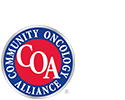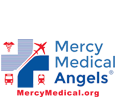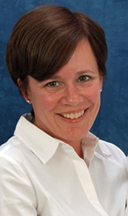(Medical) Home is Where the Care and Cost-Savings Are
The word “home” has many connotations: the building in which you live, the place you come from, and even the end point of a game. Now, there is a new type of home: The Patient-Centered Medical Home (PCMH).
PCMH is a model of primary care that is patient-centered, comprehensive, team-based, coordinated, accessible and focused on quality and safety. It has become a widely accepted – and cost-effective – model for how primary care should be organized and delivered, encouraging providers to give patients the right care in the right place, at the right time and in the manner that best suits their needs.
“The magnitude of savings depends on a range of factors, including program design, enrollment, payer, target population, and implementation phase,” explains Michelle Shaljian, MPA, Chief Strategy Officer of the Patient-Centered Primary Care Collaborative (PCPCC). “Most often, the medical home’s effect on lowering costs is attributed to reducing expensive, unnecessary hospital and emergency department utilization.”
When the Affordable Care Act (ACA) was signed into law in 2010, medical homes got a boost because of numerous provisions that increased primary care payments, expanded insurance coverage and invested in medical home pilots, among other programs.
The model has been adopted by more than 90 health plans, dozens of employers, 43 state Medicaid programs, numerous federal agencies, hundreds of safety net clinics and thousands of small and large clinical practices nationwide since then. Among the results:
- In Michigan, Blue Cross Blue Shield – the nation’s largest PCMH designation program — saved an estimated $155 million in preventative claim costs over the first three years of implementation.
- CareFirst Blue Cross Blue Shield in Maryland reported nearly $40 million savings in 2011 and a 4.2 percent average reduction in expected patient’s overall health care costs among 60 percent of practices participating for six or more months.
- In New York, the Priority Community Healthcare Center Medicaid Program in Chemung County saved about $150,000 or 11 percent in the first nine months of implementation, reduced hospital spending by 27 percent and reduced ER spending by 35 percent.
- In Pennsylvania, Pinnacle Health achieved a zero percent hospital readmission rate for PCMH patients versus a 10-20 percent readmission rate for non-PCMH patients.

The PCPCC is the leading national coalition dedicated to advancing PCMH. According to PCPCC, the medical home is an approach to the delivery of primary care that is:
- Patient-centered: A partnership among practitioners, patients and their families ensures that decisions respect patients’ wants, needs and preference, and that patients have the education and support they need to make decisions and participate in their own care.
- Comprehensive: A team of care providers is accountable for a patient’s physical and mental health needs, including prevention and wellness, acute care, and chronic care.
- Coordinated: Care is organized across all elements of the broader health care system, including specialty care, hospitals, home health care, community services and supports.
- Accessible: Patients access services with shorter wait times, “after hours” care, 24/7 electronic or telephone access, and strong communication through health IT innovations.
- Committed to quality and safety: Clinicians and staff enhance quality improvement through the use of health IT and other tools to ensure that patients and families make informed decisions about their health.
According to Melinda Abrams, Vice President of Patient-Centered Primary Care Program at the Commonwealth Fund, to have the greatest impact, a medical home must be located at the center of a “medical neighborhood” inhabited by hospitals, specialty physicians, physical therapists, social workers, long-term care facilities, mental health professionals and other service providers. She notes that it is the role of the primary care provider to coordinate care and make sure that patients don’t slip through the cracks, or receive tests or procedures they’ve already had – a particular concern for patients who see multiple doctors.
The National Committee for Quality Assurance (NCQA) – a non-profit, independent group dedicated to improving health care quality – accredits and certifies a wide range of health care organizations and is the leading national group that recognizes PCMH with the most widely adopted model. Currently, there are almost 5,000 NCQA Recognized PCMHs across the country.
Other organizations with PCMH recognition programs include Accreditation Association for Ambulatory Health Care, Inc. (AAAHC), the Joint Commission, and URAC. Videos from the American Association of Family Physicians (AAFP) feature family physicians who discuss practice redesign aimed at lowering costs, maximizing staff expertise and improving patient care.
“Practices seeking to initiate a patient-centered medical home will find that an assessment process is very helpful to understand where they are,” said Shaljian. “Some practices have electronic health records, a very strong history of team-based care, and strong connections with specialists, hospitals, and other stakeholders in the community, while others do not. Some are deeply affected by an internal culture of quality improvement, which makes a huge difference in how successful some medical homes are.”
Want to learn more about PCMH? Visit the U.S. Department of Health & Human Services’ Agency for Healthcare Research and Quality content-rich Resource Center.
How can health care continue to move the nation to PCMH? And how can the model tackle its number-one challenge: the current fee-for-service payment system?


















